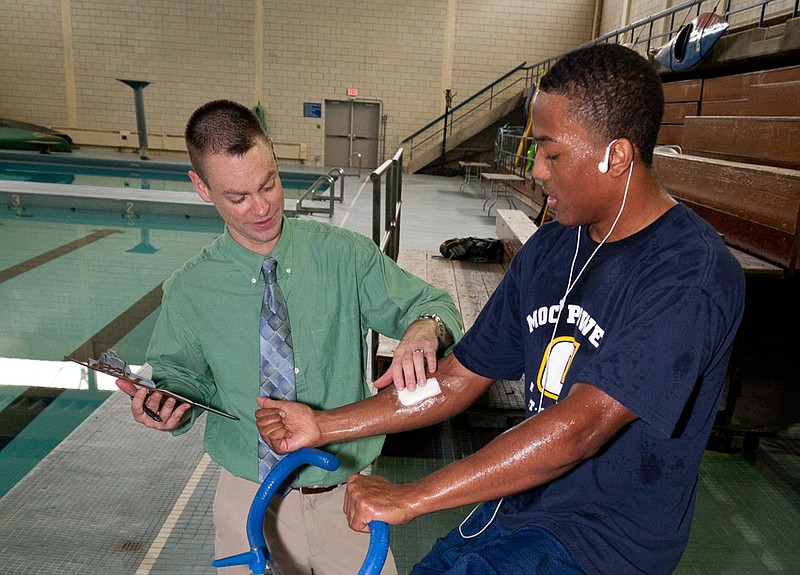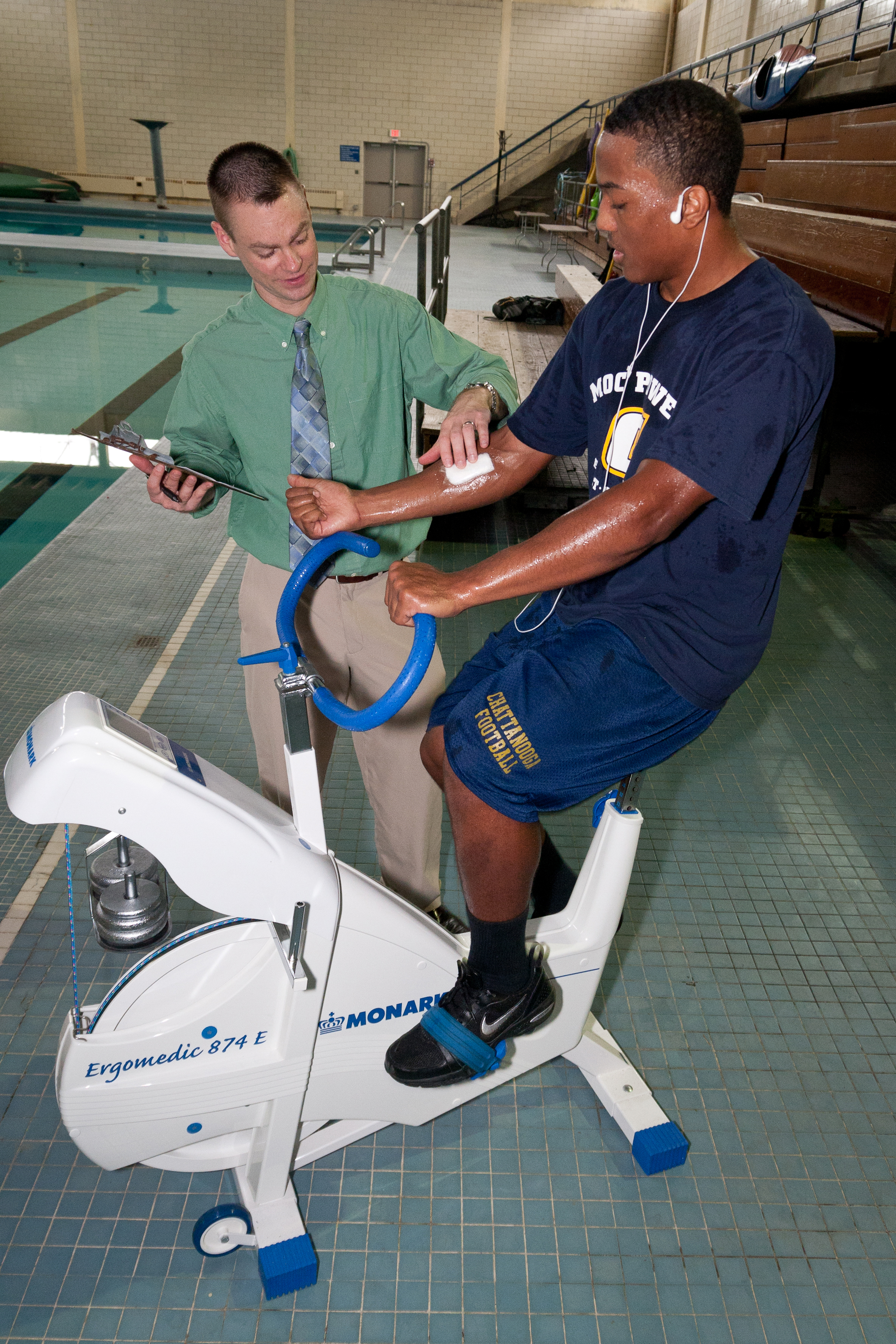A BODY'S INTERNAL THERMOSTATSweating is the most effective way humans regulate body temperature. Our bodies change temperature in four ways:Sweat: When water evaporates from skin, the transfer of energy cools down the body.Conduction: Heat is transferred during physical contact.Convection: Environmental factors such as wind affect body temperature.Radiation: Energy from sources such as the sun send out heat.Source: Brendon McDermott
It was halftime in UTC's first football game of the 2010 season against Appalachian State, and defensive back Jordan Tippit could feel muscle cramps coming on.
"I was cramping all during the second half. I wasn't able to give 100 percent the rest of the game," he said. "We kind of ran out of gas at the end."
The Mocs lost on that humid, 95-degree day, but the story could have ended differently if the team had known the answer to a question that has eluded the scientific community for decades: What can athletes do to prevent cramps?
"The body is protective. The reason that we cramp is so we don't go into realms we're not supposed to," University of Tennessee at Chattanooga researcher Brendon McDermott said.
Chemically, it's difficult to say what causes the debilitating pain. McDermott, an assistant professor, has done extensive cramping research and believes a number of factors, including blood glucose, electrolyte and hydration levels, fluid balance and meals before a workout contribute to cramping, though research has yet to show a clear cause.
Right now there are two leading theories about the cause of cramps: simple muscle fatigue and salt imbalances. McDermott and sports medicine graduate student Billy Wilson are trying to find out if the salt theory holds water.
The two collected sweat from five cramp-prone athletes and five regular athletes of similar body types and compared the sweat's salt content. The crampers would be salty sweaters, the theory goes, because among other reasons, salt helps the body hold water.
Though past research suggested crampers sweat out more salt, McDermott and Wilson weren't able to replicate the results, perpetuating the question: What causes us to cramp?
"I think it's a combination of all that stuff, electrolyte loss, how much you sweat, your conditioning, your environment," Wilson said.
McDermott agreed. Though salt doesn't appear to be the defining factor in a cramp attack, deficiencies likely contribute.
When exercising, heavy, salty sweaters can lose up to 5 grams of salt. Compare that to the 2.4 gram daily intake recommendation and it's easy to see how a person's salt levels can get dangerously low.
McDermott said there are two spectrums of sweaters - heavy to light perspiration and salty to not-salty. Salty sweaters tend to build up white powder around the sweat lines of their workout clothes.
No sports drink can replace the salt lost during exercise without tasting like ocean water, experts say.
The UTC pair plan to continue their research this summer as high school football teams begin their summer practices. They hope their studies will allow them to solve the cramping conundrum and help give dietary recommendations to athletes.
After serving in the hot deserts of Kuwait, 10-year Army reservist Wilson is betting the research can be used beyond the football field.
"I have heard of people being out on runs and in full gear and having cramping issues, and we've had medics that have had to give them IV fluids," he said.


